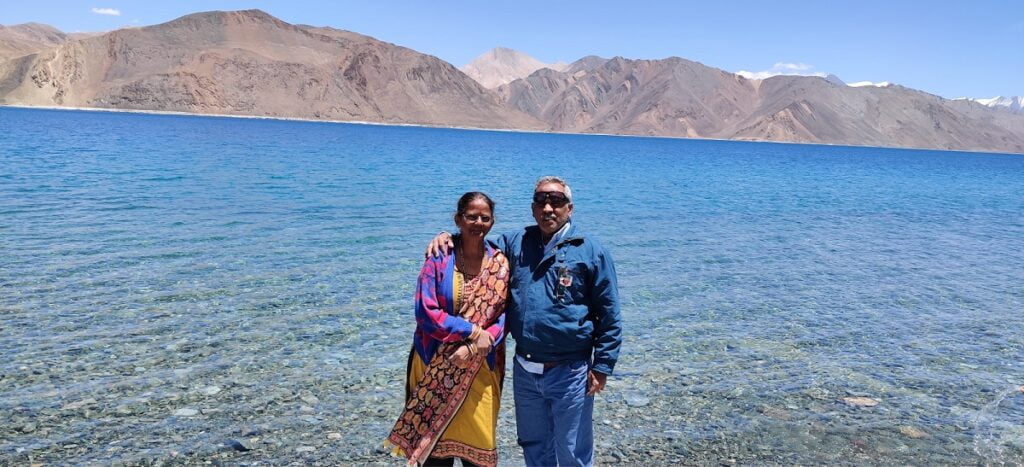
My parents visited Leh recently, a land of unparalleled beauty and serenity. I want to recount their experiences in this place and give you a detailed account of their travel in this blog.
Ladakh, often called the “Land of High Passes,” is now a Union Territory, having been formerly part of Jammu and Kashmir. It is renowned for its rough terrain, breathtaking natural scenery, and cultural legacy.
Ladakh is surrounded by the world’s highest peaks, like the Himalayas, Karakoram, and the Ladakh range. It is equally famous for its coldest deserts and adventures like trekking, rafting, paragliding, mountain climbing, biking etc.
The following are a few must-visit places in Leh.
Nubra Valley– A Camel Ride to Remember
Their first stop was Nubra Valley, a hidden gem in Leh. As they landed in this picturesque valley, they were greeted by beautiful landscapes, colourful villages, ancient monasteries, etc. The valley is about 3,000 meters above sea level and is surrounded by snow-capped mountains, making it a paradise for nature lovers and adventure seekers. The valley is famous for its camels, too, which my parents enjoyed.

Pangong Lake – Where Heaven Meets Earth
Next on their itinerary was the world-famous Pangong Lake, a destination straight out of a dream. The pristine blue waters were such a view, reflecting the azure sky above. With beautiful mountains in the background and serene waters, they spent most of their time by the lakeside, captivated by the sheer grandeur of nature. It is a perfect spot for true bliss and bonding with nature.

Tsemo Monastery (Leh Old Monastery) – Where Time Stands Still
Their next stop was Leh Old Monastery – the Tsemo Castle and Monastery situated on the hilltop near the Leh Palace. The sacred sanctuary is steeped in history and spirituality, with panoramic views of Leh Town and mountains. The intricate architecture and the colourful prayer flags dancing in the wind were a welcome sight.

The monastery has ancient manuscripts and frescoes and has a 3-storey high gold statue of Buddha, which is one of the place’s highlights.
Leh Palace – Regal and Royal Beauty Preserved
Their next destination was the Leh Palace, situated on a hilltop, an iconic landmark of the region. The palace offers a unique blend of history, culture, and architecture where one can learn about the region’s heritage.
The palace was constructed in the 17th century and served as the royal residence of King Sengge Namgyal, the ruler of the Namgyal dynasty. It is 9 stories high, and its architecture is a blend of traditional Tibetan, Indian, and Islamic styles.

The palace has been converted into a museum that showcases the rich history and culture of the with various artifacts, including thangkas (Tibetan Buddhist paintings), old photographs, traditional costumes, and other objects that give visitors a glimpse into the lives of the royal family and the people of the region.
Santi Stupa – A Monument of Peace
Last but not least, they went to Santhi Stupa, a must-visit spot with serene views and a haven for peace seekers. It is situated at 11,841 feet above sea level, blessed by the 14th Dalai Lama, making it significant for Buddhists. Visitors must not miss the captivating sunsets and sunrises, especially during full moon nights when the monument glows in moonlight.

In conclusion, my parents’ Leh journey was filled with joy and every moment left a lasting impression. Ladakh’s beauty, culture, and spirituality deeply moved them. The rugged deserts, charming villages, and spiritual sites like Shanti Stupa made their adventure unforgettable. We wish our readers many trips like this. To read more travel-related content, you can click here.

